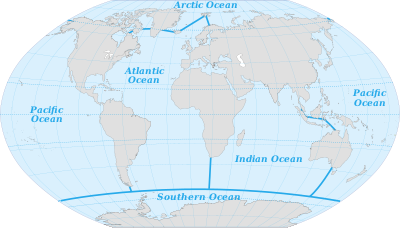
Ocean
We found 16 free papers on Ocean
Essay Examples
Blue Ocean Strategy – Term Paper
Ocean
Corporate Strategy is an important part of the theory and practice of management. For top management, strategy is what a map or a compass is to a sailor on a ship; it is a map for navigating the corporate ship towards its desired goal (Srinivasan, 2009). Strategies are a reality of any business model whether…
Exploring 3m’s Blue Ocean Strategy
Ocean
In order to implement a successful Blue Ocean Strategy, companies must investigate three tiers of non-customers and analyze the buyers’ utility map and experience cycle. By doing so, they can identify the barriers to buyers’ utility and potentially discover untapped customer potential. The three tiers of non-customers clarify which customers are not purchasing the company’s…
Difference of Red Ocean Strategy and Blue Ocean Strategy
Ocean
Last week in our lesson, we discussed the difference between Red Ocean strategy and Blue Ocean strategy. In a Red Ocean, companies face fierce competition and are forced to lower their profit margins to survive. No market is immune to saturation, so as more competitors enter the market, each company’s profit margin decreases. To stay…
Journey to the Ocean Floor
Ocean
Journey to the Ocean Floor Oceanography is a science that draws upon the methods and knowledge of geology, chemistry, physics, and biology to study the ocean. The Pacific Ocean is the largest and the deepest ocean. Most submersible dives follow a similar pattern, emphasizing bottom transecting, collecting and photographing specimens. To understand our ocean floor…
Pros and Cons of Blue Ocean Strategy Sample
Ocean
Blue ocean scheme makes the competition irrelevant by making a new market infinite where there is no competitions. There are many pros and cons of this strategy- the chief and considerable advantage of this scheme is the first mover benefit in footings of market incursion where the companies see no competition and hence these companies…
Neritic Zone – Density
Chemistry
Ocean
Water
The Neritic zone is also called coastal waters, the coastal ocean, and the sublittoral zone. It is the part of the ocean extending from the low tide mark to the edge of the continental shelf. It is considered a shallow depth, extending to about 200 meters. The Neritic zone has decently well oxygenated water, low…
Indian Ocean Thesis Statement
Mongols
Ocean
Between 500 BCE and 1400 CE, the Middle East, Russia, and Asia in the Indian Ocean regions experienced significant economic, cultural, and political transformations due to Mongol rule. The influence of the Mongolians was deeply impactful and marked by acts of violence and aggression. Politically, during the 13th Century, they exerted control over all Chinese…
Microbes and Hydroecosphere
Atmosphere
Ocean
Water
The hydro-ecosphere provides a more favorable environment for microorganisms compared to the atmosphere and lithosphere due to the presence of water. Water plays a crucial role in microbial metabolism (Atlas and Bartha, 1993). The unique properties of water also make it suitable as a habitat within the hydrosphere. Water’s polarity, with its slight negative and…
Bateu Bay Rockplatfrom Year 11 Task
Ecosystem
Nature
Ocean
To investigate the Biodiversity of Wonga Point Rock Platform, through the following: -Examining adaptations of the plants and animals for life of the rock platform -Measuring abiotic characteristics of the rock platform -Examining and comparing the richness of species in sub habitats on the rock platform -Measuring the abundance and distribution of some molluscs and…
Is El Nino Responsible for Global Warming, or Is It a Natural Phenomenon?
Climate
Nature
Ocean
Introduction What is El Nino? The semisynthetic environmental catastrophe made out to be, or an flight from what research workers can non explicate? Understanding the events construction and planetary impact is the first measure to construing these inquiries. The planetary population can non take sides on an issue that they do non grok, yet recent…
Frequently Asked Questions about Ocean
Don't hesitate to contact us. We are ready to help you 24/7

